
views
Increasing Your Flexibility

Complete lunges to strengthen your hamstrings and glutes. Do 5-10 sets of lunges for each leg. To do a lunge, position one leg in front of you and one behind you. Bend your back knee so that you’re using your legs to balance, keeping the front knee bent as well with your front foot flat. Stand in front of a mirror sideways to help you see whether you’re doing lunges correctly. When you lunge, each leg should create a 90 degree angle. Keep your back straight as you do lunges.
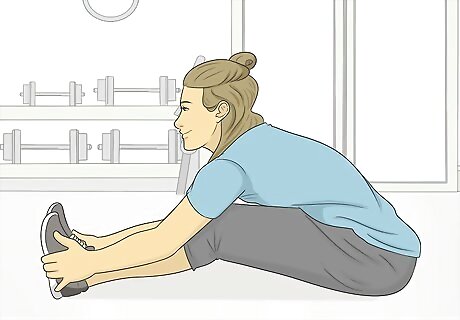
Try the seated forward bend to stretch out your back. Sit on the floor with your feet stretched out in front of you. Sit up straight and move your arms above your head, slowly lowering them to your legs to try to touch your feet. Stretch down as far as you can without hurting yourself before slowly coming back up to a seated position. Do this 5 times to stretch out your back, keeping it as straight as possible. Keep your legs straight and touching the entire time.
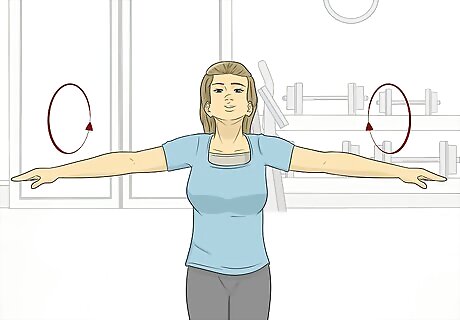
Move your arms in circles to loosen them up. While you may not immediately think of your arms as essential to your cheer jumps, they’re important for your balance and help you jump higher. Stick your arms straight out on either side of you and move them in circles slowly for 5-10 seconds before reversing the direction. Sit or stand up straight when doing arm exercises. Try doing tight, small circles and increase the size of your circles as you rotate your arms.

Improve your jumps by doing straddle splits. Sit down on a flat surface and stretch out your legs to either side of you. Bend over to the left side by hinging at the waist while stretching your right arm over your head, and then to the right side with your left arm over your head, stretching out your straddle. Come to the middle as well, lowering your body as far down as possible while keeping your legs outstretched and straight. Stretch for 15-20 seconds per position, keeping your back straight. Keep your toes pointed during this stretch if possible.
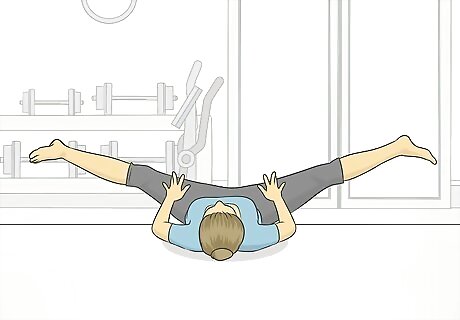
Stretch your inner thighs by doing supine straddles. Lay on a flat surface on your back and create a wide straddle with your legs. Place each of your hands on top of your inner thighs and press down slightly to stretch out your straddle. Press down and let go of your legs 10 times while keeping them in a straddle to practice the stretch. Keep your legs straight the entire time you’re stretching. As you're stretching out your legs, they should be moving towards the ground on either side of you.
Doing Jump Exercises
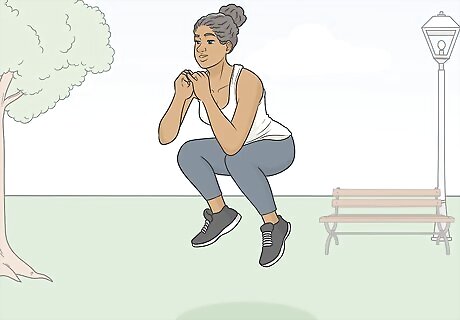
Jump while bringing your knees up under you to practice your height. Bend your knees to gather momentum for your jump before jumping up as high as possible and tucking your knees up in front of you. Land with your knees bent to avoid hurting them. Do this 5-10 times to practice jumping higher and higher. Avoid crouching over your knees as you jump and keep your head facing forward.
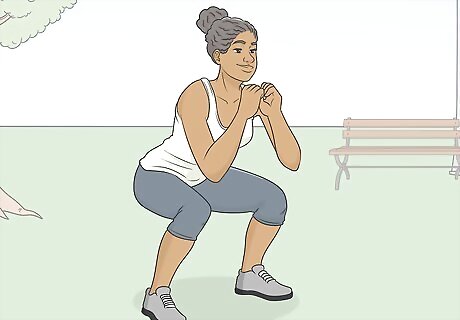
Do squats to strengthen your legs and core. Stand up straight with both feet planted flat on the floor, a little spread out from each other. Bend your knees and try to bring your bottom as low as possible, holding this pose for a few seconds before coming back up to a standing position. Do 5-10 squats to build your muscles and improve your jumps. The better you become at squats, the longer you’ll be able to hold them. Avoid hunching your back as you're doing squats. Squats are a great way to work out if you don't have any exercise equipment at home.
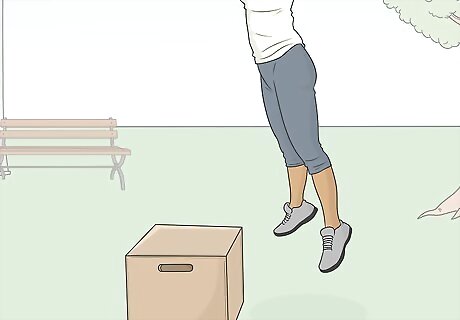
Use boxes to train your legs to jump higher and more powerfully. Your local gym likely has boxes that you can use for jump training. Practice bending your legs and jumping onto the box while landing with both feet flat on the box. There are several other ways to use the box for training, such as jumping over the box or starting on the box and jumping off of it. Always use boxes that are stable and designed for training. This form of training is called plyometrics.
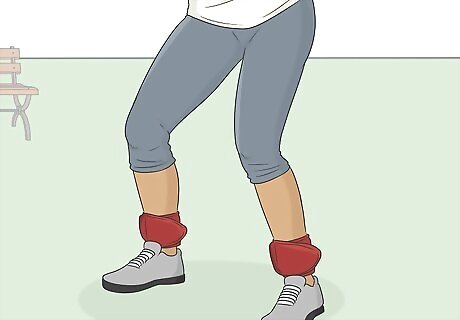
Attach weights to your ankles to improve your strength while jumping. Start off with light weights, such as 1–1.5 pounds (450–680 g) ones. Secure the weights onto each ankle before you jump, jumping 5-10 times with the weights on. The weights will make your legs feel heavier than they actually are, strengthening your legs and ankles so that you jump higher once you remove the weights. Only attach weights to your ankles once you've mastered the specific type of jump you're doing. Be aware that ankle weights increase your risk of injury and may put more stress on your joints and muscles.
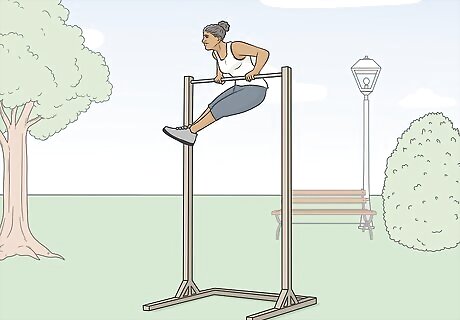
Try pike pull ups to gain leg power. Hang from a pull up bar with your legs straight out in front of you. As you pull your body up using your arms, practice lifting your legs up in front of you to the bar, keeping them straight, before lowering them back down in front of you. Do 5-10 pike pull ups to strengthen your muscles. Keep your toes pointed when doing pike pull ups.

Do jump kicks to stretch out your legs. In a jump kick, you jump with one leg and use the other leg to kick the air as high as you can go. Do 5-10 of these, keeping your arms outstretched and switching legs to ensure they both get practice. Start off doing the jump kicks slowly before increasing your speed.
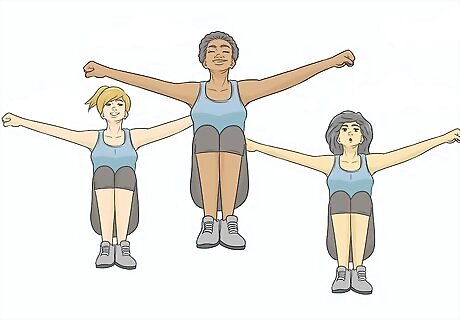
Practice jump drills with a friend or teammate. Jump drills are often done using 8-counts, helping you stay in rhythm as you're practicing each different jump. Create your own drill by deciding which jumps you'll do, such as hurdlers, toe touches, or T jumps. Do a certain number of each jump before immediately starting on the next jump. For example, your drill might consist of 5 toe touches, 5 pikes, 5 hurdlers, 5 tucks, and 5 T jumps. Practice using the right arm movements for each jump, such as positioning your arms in a high V at the beginning of T jumps.
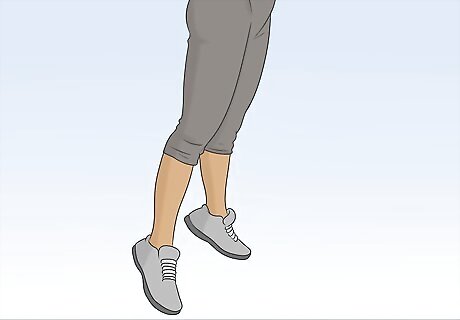
Point your toes when you do each cheerleading jump. This makes your jumps look crisper and more professional. When you're doing exercises and drills, or even when you're stretching, focus on pointing your toes so it becomes a natural habit.















Comments
0 comment